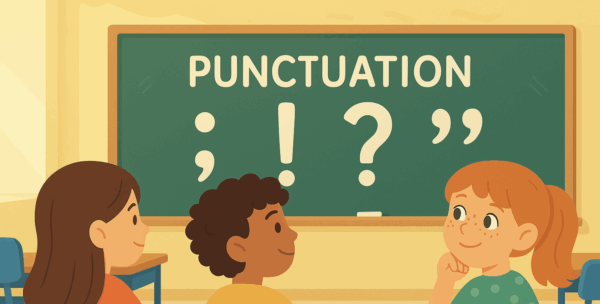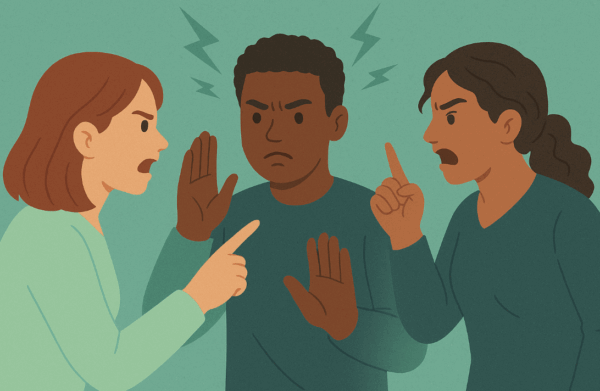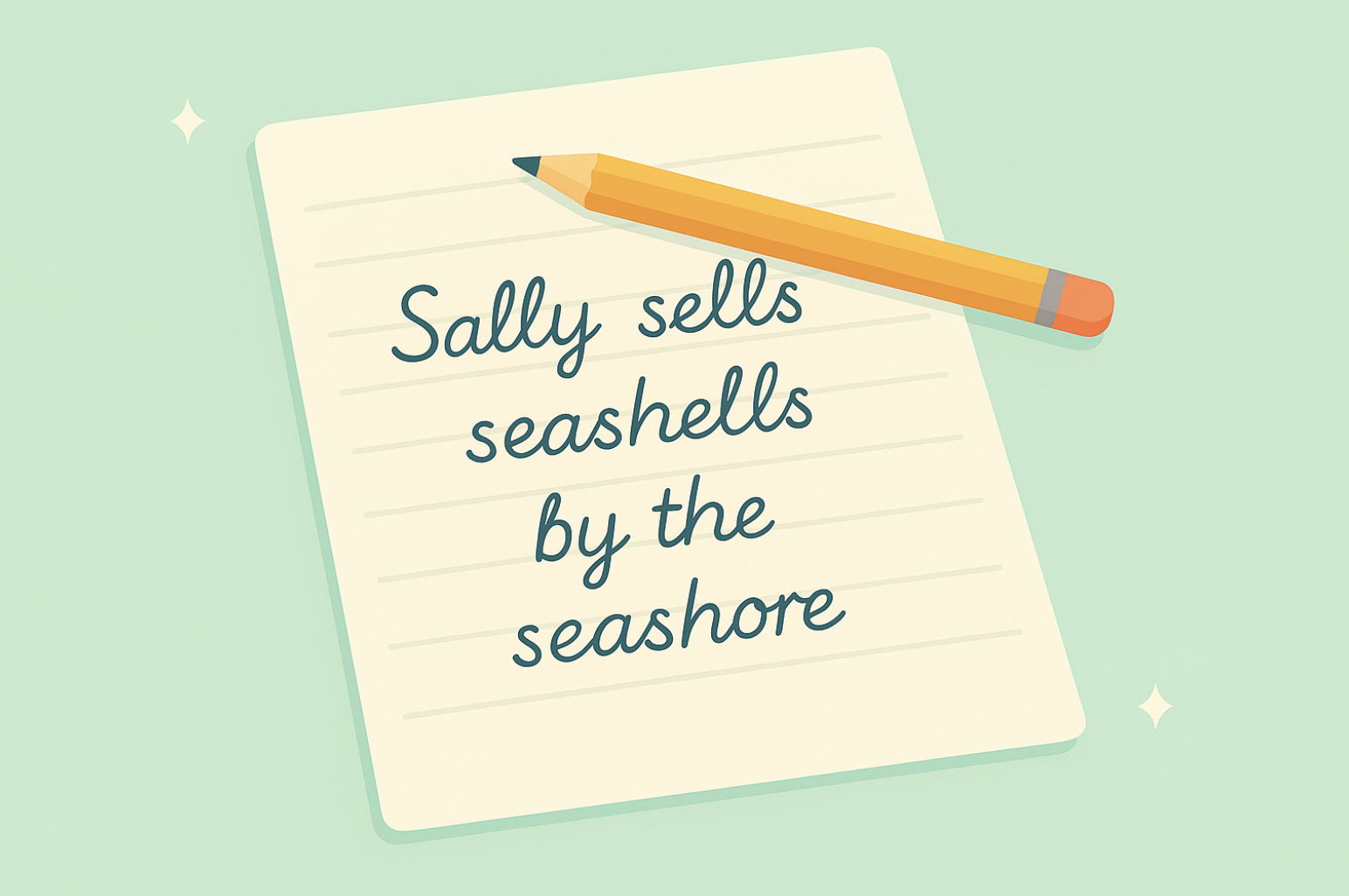Have you ever heard someone say, “It’s raining cats and dogs” and wondered where the animals were? Or maybe you’ve been told to “break a leg” before a big performance. These are idiomatic phrases, which are commonly used expressions whose meanings differ from the literal interpretations of the words. These phrases don’t mean exactly what they say—they’re examples of figurative language.
Figurative language engages writing and speech, paints vivid pictures in the reader’s mind, and helps us express ideas uniquely. It adds color, emotion, and depth to words, making stories and conversations more interesting. Writers, poets, and even advertisers use it to grab attention and make their messages more memorable.
In this article, we’ll break down what figurative language is, how it works, and why it’s so important. You’ll also find plenty of figurative language examples, including common metaphors, similes, personification, and more.
What Is Figurative Language?
At its core, figurative language is when words go beyond their literal meaning to create a hidden meaning or imaginative effect. It’s a way of expressing complex ideas in a way that is more interesting, colorful, and impactful.
Figurative language is a crucial literary device that enhances the reader’s experience by creating vivid imagery and emotional connections.
Unlike literal language, which means exactly what it says (e.g., “The sky is blue”), figurative language creates comparisons, exaggerations, or symbolic meanings (e.g., “The sky was a canvas painted with fire”).
Figurative language is everywhere—in spoken language, everyday speech, literature, poetry, advertising, and even music lyrics. It helps convey emotions, create strong mental images, and make storytelling more powerful.
The Power of Figurative Speech in Writing and Conversation
Why do we use figurative language? Because it makes our words more expressive and engaging. Instead of saying, “He is very fast,” we might say, “He runs like the wind”, which gives a much stronger image.
Understanding figurative language is crucial for language development and enhances communication, emotional intelligence, and comprehension of literature.
Figurative speech helps:
- Convey emotions and ideas creatively
- Make descriptions more vivid and memorable
- Engage the reader’s senses
- Enhance storytelling and poetry
We also use it in everyday conversations without even realizing it. For example:
- “I’ve told you a million times!” – Extreme exaggeration (hyperbole)
- “Time flies when you’re having fun.” – A metaphor comparing time to a flying object
Figurative language is a natural part of how we communicate, helping to express ideas more powerfully.
Figurative Language vs. Literal Meaning: Understanding the Difference
It’s important to understand how figurative language differs from literal meaning.
- Literal language states facts directly:
- “The snow is cold.” (This is literally true.)
- Figurative language paints a picture or adds deeper meaning:
- “The snow kissed my skin.” (Snow doesn’t actually kiss, but this phrase makes it sound gentle and soft.)
Idioms are phrases whose meanings differ from the literal meanings of the individual words.
While figurative language is great for storytelling and poetry, literal language is essential in areas like legal documents, instructions, and academic writing, where clarity is key.
The Importance of Understanding Literal Meaning: Avoiding Misinterpretation
Understanding literal meaning is crucial in effective communication, as it helps to avoid misinterpretation and ensures that the intended message is conveyed accurately. Literal meaning refers to the exact or dictionary definition of a word or phrase, without any figurative or idiomatic interpretation. In everyday speech and writing, literal meaning is often used as a foundation for more complex forms of communication, such as figurative language.
When using figurative language, it’s essential to understand the literal meaning of the words and phrases involved. This helps to create a clear and accurate interpretation of the intended message, avoiding misinterpretation and confusion. For instance, if someone says “It’s raining cats and dogs,” the literal meaning of the phrase is not that cats and dogs are falling from the sky, but rather that it’s raining heavily.
In addition, understanding literal meaning is vital in academic and professional settings, where clear and accurate communication is critical. In these contexts, using literal language can help to convey complex ideas and information in a precise and unambiguous manner.
Types of Figurative Language: The Most Common Forms
Figurative language plays a crucial role in storytelling, helping to enhance emotional depth and engagement. A study analyzing figurative language in English storytelling found 15 instances across various sentences, with personification being the most frequently used, followed by metaphors, hyperboles, and similes. There are many types of figurative language, but here are the most common types with examples:
1. Metaphor (Comparing two different things)
- Example: “Time is a thief.”
- Meaning: Time doesn’t steal, but it feels like it takes moments away from us.
2. Simile (Comparing two things using like or as)
- Example: “She was as busy as a bee.”
- Meaning: She was very busy, just like a hardworking bee.
3. Personification (Giving human characteristics to non-human things)
- Example: “The wind whispered through the trees.”
- Meaning: The wind doesn’t whisper, but this gives it a human-like quality.
4. Hyperbole (Extreme exaggeration)
- Example: “I’ve told you a million times!”
- Meaning: The speaker is exaggerating—they haven’t said it a million times.
5. Idioms (Common phrases with a meaning different from their literal words)
- Example: “Break a leg!”
- Meaning: A way to wish someone good luck.
6. Extended Metaphor (A metaphor that continues for several lines)
Example: Robert Frost’s “The Road Not Taken”, which compares life choices to roads.
Extended metaphors are recurring comparisons throughout a work that can manifest over several lines or entire pieces, often conveying deeper meanings akin to allegories. For instance, Emily Dickinson’s poem uses extended metaphors to enhance thematic depth.
These literary devices make writing more expressive and powerful.
Metaphors: Understanding One of the Most Powerful Literary Devices
Metaphors are one of the most widely used and impactful forms of figurative language. They allow writers and speakers to draw direct comparisons between unrelated things, creating vivid imagery and deeper meaning.
What Is a Metaphor?
A metaphor is a literary device that describes one thing as if it were another, without using like or as. It implies a resemblance between two unrelated concepts, making descriptions more engaging and thought-provoking.
Example:
“Time is a thief.” – Time doesn’t literally steal, but this metaphor suggests that time takes moments away from us, just like a thief.
Metaphors can make language more expressive, emotional, and memorable. They are used in literature, poetry, advertising, and everyday conversations to convey ideas powerfully.
Common Examples of Metaphors
Metaphors are all around us, often in phrases we use every day. Here are some examples:
- The world is a stage. – Life is compared to a stage, suggesting that we all play different roles.
- She has a heart of stone. – Her heart is being compared to stone, implying she is emotionally cold.
- His words were music to my ears. – Words are compared to music, suggesting they were pleasant and enjoyable.
- The classroom was a zoo. – The chaotic nature of a classroom is likened to a zoo full of animals.
Extended Metaphors: A Deeper Comparison
While simple metaphors compare two things in a single phrase, extended metaphors develop the comparison over several lines or even an entire work. These metaphors help reinforce themes and create lasting imagery.
Famous examples of extended metaphors include:
- Shakespeare’s “All the world’s a stage” (from As You Like It), comparing life to a theatrical play.
- Robert Frost’s “The Road Not Taken,” where a fork in the road symbolizes life choices.
- Emily Dickinson’s “Hope is the thing with feathers,” which compares hope to a bird that perches in the soul.
Why Are Metaphors So Powerful?
Metaphors enhance writing and speech by:
- Making abstract concepts easier to understand
- Adding depth and emotional impact
- Helping readers visualize ideas more vividly
- Making language more poetic and engaging
Whether in classic literature, everyday conversations, or marketing slogans, metaphors shape how we express and interpret ideas.
The Role of Descriptive Language: Using Descriptive Language Effectively
Descriptive language is a type of language that uses vivid and sensory details to describe people, places, objects, and experiences. It is a powerful tool in writing and speech, as it helps to create a mental image or atmosphere, engaging the reader or listener and making the message more memorable.
Descriptive language can be used in various forms, including figurative language, such as metaphors, similes, and personification. These literary devices help to create a rich and evocative description, drawing the reader or listener into the world of the text.
To use descriptive language effectively, it’s essential to choose words and phrases that are precise and evocative. For example, instead of saying “The sunset was beautiful,” you could say “The sunset was a kaleidoscope of colors, with hues of orange, pink, and purple dancing across the sky.” This descriptive language helps to create a vivid image in the reader’s mind, making the experience more engaging and memorable.
In addition, descriptive language can be used to convey complex ideas and emotions, making it a valuable tool in creative writing and everyday communication. By using descriptive language effectively, you can add depth, nuance, and emotion to your writing and speech, making it more engaging and impactful.
Figurative Language Examples from Literature and Real Life
Figurative language has been used by famous writers, poets, and speakers to make their words more impactful.
Examples from Literature
- Shakespeare: “All the world’s a stage, and all the men and women merely players.” (Metaphor)
- Emily Dickinson: “Hope is the thing with feathers.” (Metaphor for hope as a bird)
- Robert Frost: “Two roads diverged in a yellow wood.” (Extended metaphor about life choices)
Examples from Everyday Speech and Pop Culture
“It’s raining cats and dogs.” (Idiom for heavy rain)
- “Love is a battlefield.” (Metaphor used in music)
Unlike similes, metaphors make more subtle comparisons without using ‘like’ or ‘as’, blending seamlessly into text and enhancing storytelling.
These examples show how figurative language makes words more vivid and memorable.
How to Use Figurative Language in Your Writing
Want to make your writing more engaging? Here are some quick tips to effectively use figurative language:
- Use metaphors and similes to create strong mental images.
- Don’t overuse it—too much figurative language can be confusing.
- Make sure your meaning is clear so readers understand your message.
- Consider your audience—some idioms or literary devices work better in certain contexts.
By adding figures of speech to your writing, you can make it more powerful and expressive.
The Art of Expressing Ideas Creatively
Figurative language is more than just fancy words—it’s a way to express ideas, emotions, and stories more engagingly. Whether in poetry, novels, or everyday conversations, it brings words to life.
Next time you hear a common metaphor or idiom, take a moment to appreciate the creative power behind it. And if you’re a writer, experiment with figurative language to enhance your storytelling.
Want to take your writing to the next level? Spines helps you create, edit, and refine engaging content effortlessly. Start writing better today!
FAQs – What is Figurative Language?
Q1: What is a figurative language that starts with U?
A figurative language term that starts with “U” is:
Understatement – A figure of speech that makes something seem less important than it actually is.
- Example: “It’s just a scratch,” (when referring to a large dent in a car).
- This is often used for irony, humor, or politeness in writing and speech.
Q2: What are the 5 senses and figurative language?
Figurative language appeals to the five senses to make writing more vivid:
- Sight (Visual Imagery) – The sunset painted the sky in strokes of red and gold.
- Sound (Auditory Imagery) – The thunder growled like an angry beast.
- Touch (Tactile Imagery) – Her sweater was as soft as a cloud.
- Taste (Gustatory Imagery) – The lemonade was a sweet burst of sunshine.
- Smell (Olfactory Imagery) – The fresh scent of pine filled the winter air.
Sensory details help readers feel immersed in the text.
Q3: What are the 6 types of figurative language for 5th grade?
Students in 5th grade typically learn these six key types of figurative language:
- Simile – “The baby’s smile was as bright as the sun.”
- Metaphor – “Her voice is music to my ears.”
- Personification – “The wind whispered through the trees.”
- Hyperbole – “I have a ton of homework!”
- Onomatopoeia – “The bacon sizzled in the pan.”
- Idioms – “The ball is in your court.”
These help make writing more fun and expressive.
Q4: Where is figurative language used?
Figurative language is everywhere, including:
Literature & Poetry – Shakespeare’s metaphors, Emily Dickinson’s personification
Daily Conversations – Idioms like “spill the beans”
Marketing & Advertising – Metaphors in slogans like “Red Bull gives you wings”
Music & Lyrics – Metaphors in songs like “Love is a battlefield”
Movies & TV Shows – Symbolism and exaggeration in dialogue
It enhances communication by making language more engaging.
Q5: What are the 4 main types of figurative language?
Although there are many, the four most common types are:
- Metaphor – A direct comparison (“His words were daggers.”).
- Simile – A comparison using like or as (“She sings like an angel.”).
- Personification – Giving human qualities to non-human things (“The sun smiled down on us.”).
- Hyperbole – Extreme exaggeration (“I’ve told you a million times!”).
These make descriptions more powerful and creative.
Q6: What is the difference between a metaphor and a simile?
A metaphor and a simile both compare two things, but they do it differently:
- Metaphor: A direct comparison without using like or as.
- Example: “Time is a thief.” (Time doesn’t actually steal, but it feels like it takes moments away.)
- Simile: A comparison using like or as.
- Example: “She was as fast as a cheetah.”
Pro Tip: If it uses like or as, it’s a simile; if not, it’s a metaphor.
Q7: What are the 12 figures of speech with examples?
Here are 12 common figures of speech:
- Metaphor – “The classroom was a zoo.”
- Simile – “She danced like a leaf in the wind.”
- Personification – “The moon hid behind the clouds.”
- Hyperbole – “I could sleep for a year.”
- Onomatopoeia – “The door creaked open.”
- Alliteration – “Peter Piper picked a peck of pickled peppers.”
- Oxymoron – “Bittersweet” / “Deafening silence”
- Irony – A firefighter’s house burns down.
- Idiom – “Break a leg” (meaning “good luck”)
- Pun – “I used to be a baker, but I couldn’t make enough dough.”
- Synecdoche – “All hands on deck” (meaning all crew members, not just their hands).
- Anaphora – “I have a dream… I have a dream…” (Repeating phrases for emphasis).
These are used to enhance storytelling, poetry, and everyday conversation.
Q8: How do you explain figurative language to a child?
The best way to teach figurative language to a child is through simple examples and comparisons:
- Simile: “Your smile is as bright as the sun.” (Comparing two things using like or as.)
- Metaphor: “You are my sunshine.” (Saying one thing is another.)
- Personification: “The flowers waved at me.” (Giving human traits to objects.)
- Hyperbole: “I’m so hungry I could eat a horse!” (Extreme exaggeration.)
Pro Tip: Use pictures, books, and fun exercises to make it interactive!








